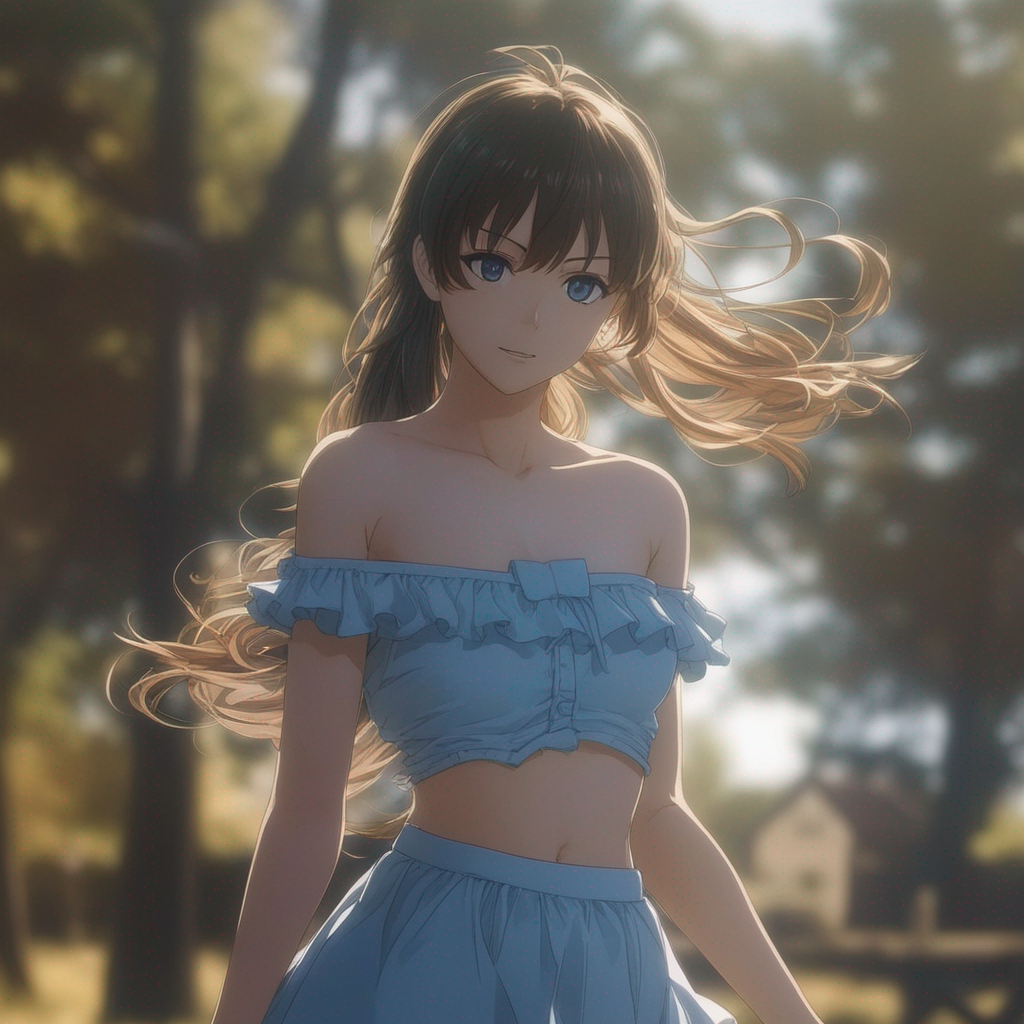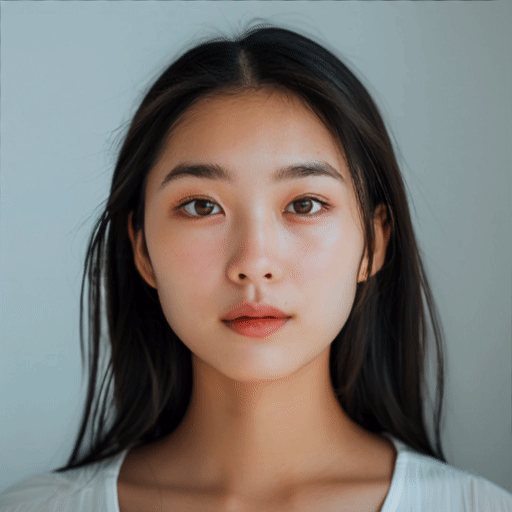photo-to-anime
Maintainer: zf-kbot

160

| Property | Value |
|---|---|
| Run this model | Run on Replicate |
| API spec | View on Replicate |
| Github link | No Github link provided |
| Paper link | No paper link provided |
Create account to get full access
Model overview
The photo-to-anime model is a powerful AI tool that can transform ordinary images into stunning anime-style artworks. Developed by maintainer zf-kbot, this model leverages advanced deep learning techniques to imbue photographic images with the distinct visual style and aesthetics of Japanese animation. Unlike some similar models like animagine-xl-3.1, which focus on text-to-image generation, the photo-to-anime model is specifically designed for image-to-image conversion, making it a valuable tool for digital artists, animators, and enthusiasts.
Model inputs and outputs
The photo-to-anime model accepts a wide range of input images, allowing users to transform everything from landscapes and portraits to abstract compositions. The model's inputs also include parameters like strength, guidance scale, and number of inference steps, which give users granular control over the artistic output. The model's outputs are high-quality, anime-style images that can be used for a variety of creative applications.
Inputs
- Image: The input image to be transformed into an anime-style artwork.
- Strength: The weight or strength of the input image, allowing users to control the balance between the original image and the anime-style transformation.
- Negative Prompt: An optional input that can be used to guide the model away from generating certain undesirable elements in the output image.
- Num Outputs: The number of anime-style images to generate from the input.
- Guidance Scale: A parameter that controls the influence of the text-based guidance on the generated image.
- Num Inference Steps: The number of denoising steps the model will take to produce the final output image.
Outputs
- Array of Image URIs: The
photo-to-animemodel generates an array of one or more anime-style images, each represented by a URI that can be used to access the generated image.
Capabilities
The photo-to-anime model is capable of transforming a wide variety of input images into high-quality, anime-style artworks. Unlike simpler image-to-image conversion tools, this model is able to capture the nuanced visual language of anime, including detailed character designs, dynamic compositions, and vibrant color palettes. The model's ability to generate multiple output images with customizable parameters also makes it a versatile tool for experimentation and creative exploration.
What can I use it for?
The photo-to-anime model can be used for a wide range of creative applications, from enhancing digital illustrations and fan art to generating promotional materials for anime-inspired projects. It can also be used to create unique, anime-themed assets for video games, animation, and other multimedia productions. For example, a game developer could use the model to generate character designs or background scenes that fit the aesthetic of their anime-inspired title. Similarly, a social media influencer could use the model to create eye-catching, anime-style content for their audience.
Things to try
One interesting aspect of the photo-to-anime model is its ability to blend realistic and stylized elements in the output images. By adjusting the strength parameter, users can create a range of effects, from subtle anime-inspired touches to full-blown, fantastical transformations. Experimenting with different input images, negative prompts, and model parameters can also lead to unexpected and delightful results, making the photo-to-anime model a valuable tool for creative exploration and personal expression.
This summary was produced with help from an AI and may contain inaccuracies - check out the links to read the original source documents!
Related Models

animeganv3

2
AnimeGANv3 is a novel double-tail generative adversarial network developed by researcher Asher Chan for fast photo animation. It builds upon previous iterations of the AnimeGAN model, which aims to transform regular photos into anime-style art. Unlike AnimeGANv2, AnimeGANv3 introduces a more efficient architecture that can generate anime-style images at a faster rate. The model has been trained on various anime art styles, including the distinctive styles of directors Hayao Miyazaki and Makoto Shinkai. Model inputs and outputs AnimeGANv3 takes a regular photo as input and outputs an anime-style version of that photo. The model supports a variety of anime art styles, which can be selected as input parameters. In addition to photo-to-anime conversion, the model can also be used to animate videos, transforming regular footage into anime-style animations. Inputs image**: The input photo or video frame to be converted to an anime style. style**: The desired anime art style, such as Hayao, Shinkai, Arcane, or Disney. Outputs Output image/video**: The input photo or video transformed into the selected anime art style. Capabilities AnimeGANv3 can produce high-quality, anime-style renderings of photos and videos with impressive speed and efficiency. The model's ability to capture the distinct visual characteristics of various anime styles, such as Hayao Miyazaki's iconic watercolor aesthetic or Makoto Shinkai's vibrant, detailed landscapes, sets it apart from previous iterations of the AnimeGAN model. What can I use it for? AnimeGANv3 can be a powerful tool for artists, animators, and content creators looking to quickly and easily transform their work into anime-inspired art. The model's versatility allows it to be applied to a wide range of projects, from personal photo edits to professional-grade animated videos. Additionally, the model's ability to convert photos and videos into different anime styles can be useful for filmmakers, game developers, and other creatives seeking to create unique, anime-influenced content. Things to try One exciting aspect of AnimeGANv3 is its ability to animate videos, transforming regular footage into stylized, anime-inspired animations. Users can experiment with different input videos and art styles to create unique, eye-catching results. Additionally, the model's wide range of supported styles, from the classic Hayao and Shinkai looks to more contemporary styles like Arcane and Disney, allows for a diverse array of creative possibilities.
Updated Invalid Date

live-portrait

5
The live-portrait model is a unique AI tool that can create dynamic, audio-driven portrait animations. It combines an input image and video to produce a captivating animated portrait that reacts to the accompanying audio. This model builds upon similar portrait animation models like live-portrait-fofr, livespeechportraits-yuanxunlu, and aniportrait-audio2vid-cjwbw, each with its own distinct capabilities. Model inputs and outputs The live-portrait model takes two inputs: an image and a video. The image serves as the base for the animated portrait, while the video provides the audio that drives the facial movements and expressions. The output is an array of image URIs representing the animated portrait sequence. Inputs Image**: An input image that forms the base of the animated portrait Video**: An input video that provides the audio to drive the facial animations Outputs An array of image URIs representing the animated portrait sequence Capabilities The live-portrait model can create compelling, real-time animations that seamlessly blend a static portrait with dynamic facial expressions and movements. This can be particularly useful for creating lively, engaging content for video, presentations, or other multimedia applications. What can I use it for? The live-portrait model could be used to bring portraits to life, adding a new level of dynamism and engagement to a variety of projects. For example, you could use it to create animated avatars for virtual events, generate personalized video messages, or add animated elements to presentations and videos. The model's ability to sync facial movements to audio also makes it a valuable tool for creating more expressive and lifelike digital characters. Things to try One interesting aspect of the live-portrait model is its potential to capture the nuances of human expression and movement. By experimenting with different input images and audio sources, you can explore how the model responds to various emotional tones, speech patterns, and physical gestures. This could lead to the creation of unique and captivating animated portraits that convey a wide range of human experiences.
Updated Invalid Date

animeganv2

46
animeganv2 is a PyTorch-based implementation of the AnimeGANv2 model, which is a face portrait style transfer model capable of converting real-world facial images into an "anime-style" look. It was developed by the Replicate user 412392713, who has also created other similar models like VToonify. Compared to other face stylization models like GFPGAN and the original PyTorch AnimeGAN, animeganv2 aims to produce more refined and natural-looking "anime-fied" portraits. Model inputs and outputs The animeganv2 model takes a single input image and generates a stylized output image. The input can be any facial photograph, while the output will have an anime-inspired artistic look and feel. Inputs image**: The input facial photograph to be stylized Outputs Output image**: The stylized "anime-fied" portrait Capabilities The animeganv2 model can take real-world facial photographs and convert them into high-quality anime-style portraits. It produces results that maintain a natural look while adding distinctive anime-inspired elements like simplified facial features, softer skin tones, and stylized hair. The model is particularly adept at handling diverse skin tones, facial structures, and hairstyles. What can I use it for? The animeganv2 model can be used to quickly and easily transform regular facial photographs into anime-style portraits. This could be useful for creating unique profile pictures, custom character designs, or stylized portraits. The model's ability to work on a wide range of faces also makes it suitable for applications like virtual avatars, social media filters, and creative content generation. Things to try Experiment with the animeganv2 model on a variety of facial photographs, from close-up portraits to more distant shots. Try different input images to see how the model handles different skin tones, facial features, and hair styles. You can also compare the results to the original PyTorch AnimeGAN model to see the improvements in realism and visual quality.
Updated Invalid Date

dreamlike-anime

3
The dreamlike-anime model from maintainer replicategithubwc is designed for creating "Dreamlike Anime 1.0 for Splurge Art." This model can be compared to similar offerings from the same maintainer, such as anime-pastel-dream, dreamlike-photoreal, and neurogen, all of which are focused on generating artistic, dreamlike imagery. Model inputs and outputs The dreamlike-anime model takes a text prompt as input and generates one or more corresponding images as output. The model also allows for configuring various parameters such as image size, number of outputs, guidance scale, and the number of inference steps. Inputs Prompt**: The text prompt that describes the desired image Seed**: A random seed value to control the image generation process Width**: The width of the output image in pixels Height**: The height of the output image in pixels Num Outputs**: The number of images to generate (up to 4) Guidance Scale**: The scale for classifier-free guidance, which controls the balance between the input prompt and the model's internal knowledge Num Inference Steps**: The number of denoising steps to perform during image generation Negative Prompt**: Specify things you don't want to see in the output Outputs Output Images**: The generated images, returned as a list of image URLs Capabilities The dreamlike-anime model is capable of generating highly imaginative, surreal anime-inspired artwork based on text prompts. The model can capture a wide range of styles and subjects, from fantastical landscapes to whimsical character designs. What can I use it for? The dreamlike-anime model can be used for a variety of creative projects, such as generating concept art, illustrations, and album covers. It could also be used to create unique, one-of-a-kind digital artworks for sale or personal enjoyment. Given the model's focus on dreamlike, anime-inspired imagery, it may be particularly well-suited for projects within the anime, manga, and animation industries. Things to try Experiment with different prompts to see the range of styles and subjects the dreamlike-anime model can produce. Try combining the model with other creative tools or techniques, such as post-processing the generated images or incorporating them into larger artistic compositions. You can also explore the model's capabilities by generating images with varying levels of guidance scale and inference steps to achieve different levels of detail and abstraction.
Updated Invalid Date